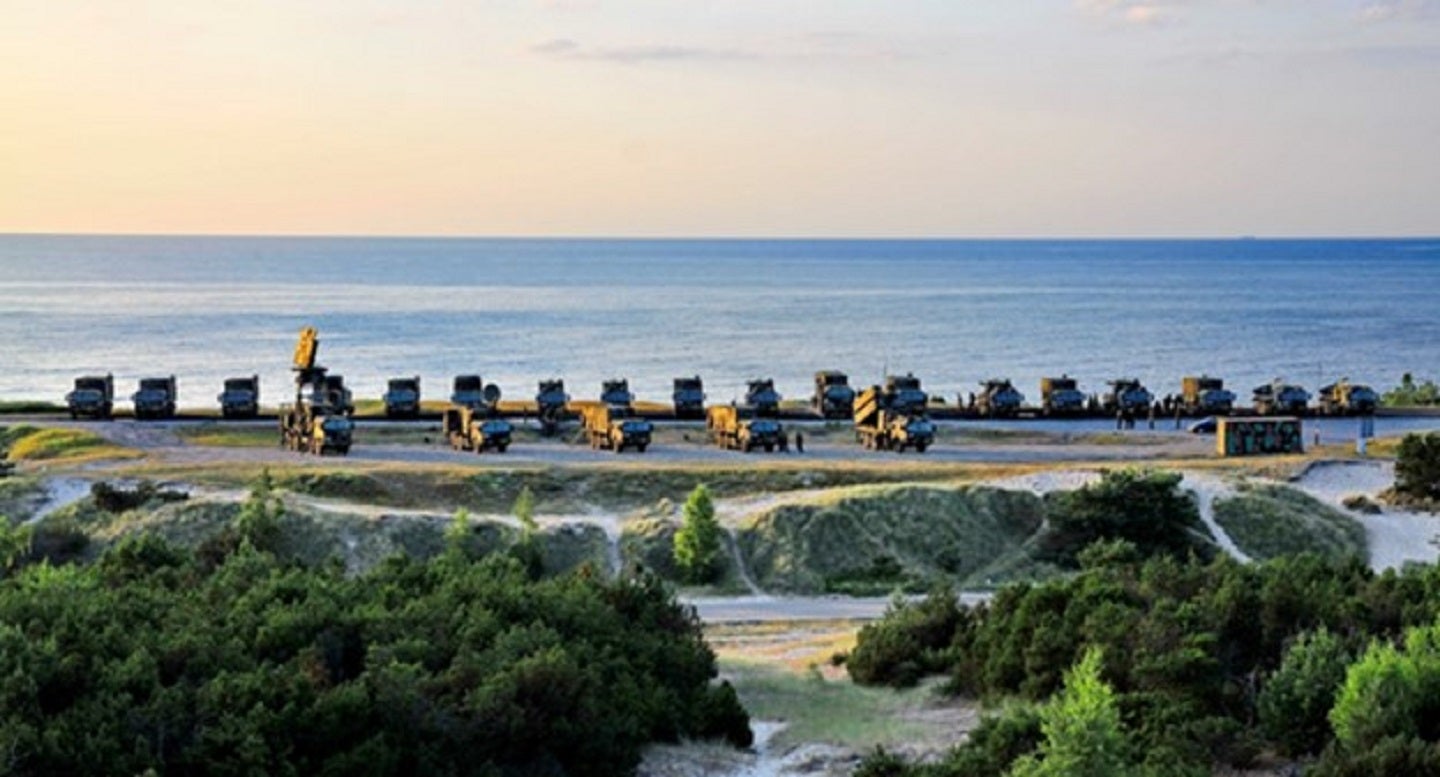
While the Polish Government has been tunnel-visioned on its vast procurement of multilayered ground-based missile defence since Russia’s invasion of Ukraine last year – which is epitomised by its £1.9bn ($2.3bn) missile export deal with MBDA UK in April – the country’s Navy has experienced little of this expansion.
However, Poland’s Minister of National Defence, Mariusz Błaszczak, has recently posted on the social media platform X that there is “Good news for the Navy.”
On 26 October, two companies in the Polish Armaments Group, also known by its Polish abbreviation ‘PGZ’, have agreed two contracts with the Norwegian supplier Kongsberg Defence and Aerospace, respectively, for the construction and delivery of two Naval Missile Units (NMUs), with supplementary servicing and production of Naval Strike Missiles (NSMs).
Currently, the Navy has two Network Detection and Response systems. One was purchased in 2008 and delivered in 2012, the other was ordered in 2014 and handed over to the Army in 2017.
On 5 September, PGZ contracted Kongsberg for coastal NMUs furnished with NSMs.
Now, the PGZ subsidiary PIT-RADWAR has expanded this acquisition with two additional NMUs and NSM support.
How well do you really know your competitors?
Access the most comprehensive Company Profiles on the market, powered by GlobalData. Save hours of research. Gain competitive edge.

Thank you!
Your download email will arrive shortly
Not ready to buy yet? Download a free sample
We are confident about the unique quality of our Company Profiles. However, we want you to make the most beneficial decision for your business, so we offer a free sample that you can download by submitting the below form
By GlobalDataIn addition, Kongsberg will also construct and deliver vehicles to four Coastal Missile Squadrons. Each of them comprise a set of vehicles: three Mobile Communication Centre vehicles; one Squadron Command Vehicle; two Battery Command Vehicles and a Command Control Vehicle. The total contract value is more 1.1bn zlotys ($261.7m). The delivery is scheduled to be completed in 2029.
In conjunction, Wojskowe Zakłady Elektroniczne, another PGZ company, agreed to a transfer of knowledge and technology regarding the servicing and production of NSMs, enabling Poland’s defence industry to domestically maintain and sustain the nation’s naval missile inventory.
Context behind PGZ’s naval missile contracts
Right now, GlobalData intelligence tells us that ground-based missile defence is the top defence segment by value in the Polish defence budget in 2023. The prominence of air and long-range missile attack by Russia in the Ukraine invasion makes it a high priority capability for Poland.
However, this threat also extends north, where the central European country has a 478m (770km) coastline along the south of the Baltic Sea and is very much a player in this naval and amphibious theatre, which has gained increasing importance.
Recently, Nato forces have stepped up patrols in the Baltic Sea following recent damage to undersea infrastructure in the region.
The increased measures include additional surveillance and reconnaissance flights, including with maritime patrol aircraft, Nato Airborne Early Warning and Control planes, and unmanned autonomous systems. A fleet of four Nato minehunters is also being dispatched to the area.
“We continue to monitor the situation closely, and we remain in close contact with our allies Estonia and Finland, and our partner Sweden,” the acting Nato spokesperson Dylan White stated. “Nato will continue to adapt its maritime posture in the Baltic Sea and will take all necessary steps to keep [its] allies safe.”
In that spirit, the Polish Navy will have a considerable role to play in deterring Russian activity in the region. Although the highest-valued naval segment in the Polish Government’s budget is frigates – its eighth-largest expense – PGZ’s contracts indicate a change in outlook wherein naval missile defence will prove to be a necessary expense alongside ground-based units.







